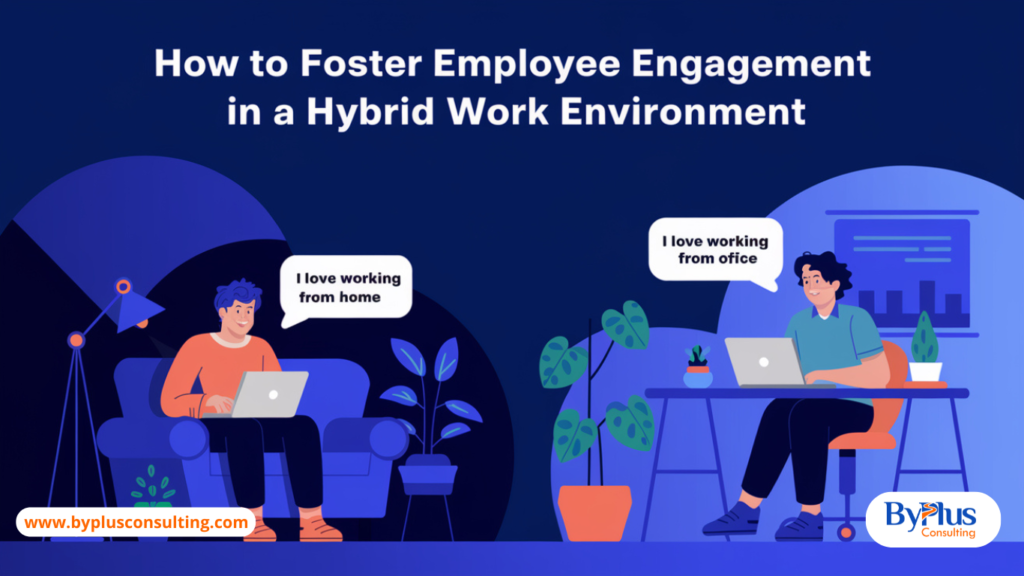
In today’s rapidly evolving work landscape, hybrid work models have emerged as a popular choice for companies seeking flexibility while accommodating both in-office and remote employees. While the benefits of this model are clear—improved work-life balance, broader talent pools, and operational flexibility—there’s a significant challenge that many organizations face: fostering employee engagement.
Employee engagement is crucial to maintaining productivity, innovation, and overall job satisfaction, but it becomes more complex when teams are dispersed across different locations. Below, we share actionable strategies to keep your hybrid workforce engaged and motivated.
1. Prioritize Clear and Consistent Communication: Communication is the backbone of any successful team, but in hybrid work environments, it requires extra attention. Employees need to feel connected to the organization and their peers, regardless of where they are working. Here’s how:
Use the right tools: Leverage platforms like Slack, Microsoft Teams, and Zoom to ensure real-time communication between remote and in-office employees. Make use of asynchronous communication tools to accommodate different work schedules.
Regular check-ins: Implement one-on-one check-ins with team members to discuss their progress, challenges, and overall wellbeing.
Transparent leadership: Leaders should frequently share company updates to help employees feel informed and aligned with the company’s goals.
2. Encourage Team Collaboration: Fostering a collaborative environment in a hybrid work setting can help employees stay engaged and feel like part of the team.
Virtual team-building activities: Schedule informal virtual meetups or online games to foster social interaction, which can help remote employees feel more included.
Cross-functional projects: Encourage employees from different departments to collaborate on projects, fostering a sense of teamwork regardless of physical location.
3. Recognize and Reward Employee Contributions: Remote workers can sometimes feel out of sight and out of mind. To prevent this, it’s crucial to recognize the contributions of every employee, whether they are working from home or from the office.
Public recognition: Regularly acknowledge achievements in company-wide meetings, on social platforms like LinkedIn, or via internal communication channels.
Offer rewards: Implement a reward system that recognizes outstanding performance. Whether it’s an employee of the month initiative or spot bonuses, recognition goes a long way in boosting morale.
4. Provide Opportunities for Growth: Employees want to feel like they are growing in their roles, even in a remote or hybrid setting.
Offer virtual training sessions: Upskilling should not be limited to in-office employees. Provide access to virtual courses and workshops to all staff members.
Mentorship programs: Pair employees with mentors within the company who can guide them in their career development, regardless of location.
5. Focus on Work-Life Balance: One of the most significant benefits of a hybrid work environment is the ability to better manage work-life balance. However, employees might struggle to disconnect from work when operating remotely. Employers need to help them maintain this balance.
Set clear boundaries: Encourage employees to stick to set work hours and discourage after-hours communications.
Promote wellness initiatives: Offer mental health support, promote regular breaks, and even consider virtual wellness activities like yoga or meditation sessions.
6. Cultivate a Culture of Trust: A successful hybrid work environment thrives on trust. Micromanaging can quickly lead to disengagement, particularly for remote employees.
Set clear expectations: Define goals, deadlines, and responsibilities for each employee, then trust them to manage their work independently.
Autonomy in work: Allow employees the flexibility to choose how and where they work, as long as they meet their deliverables.
Conclusion: Fostering employee engagement in a hybrid work environment is not just about implementing new tools or policies; it’s about creating an inclusive and supportive company culture that values communication, recognition, and growth. By following the above strategies, organizations can ensure that their hybrid teams remain motivated, engaged, and productive.
